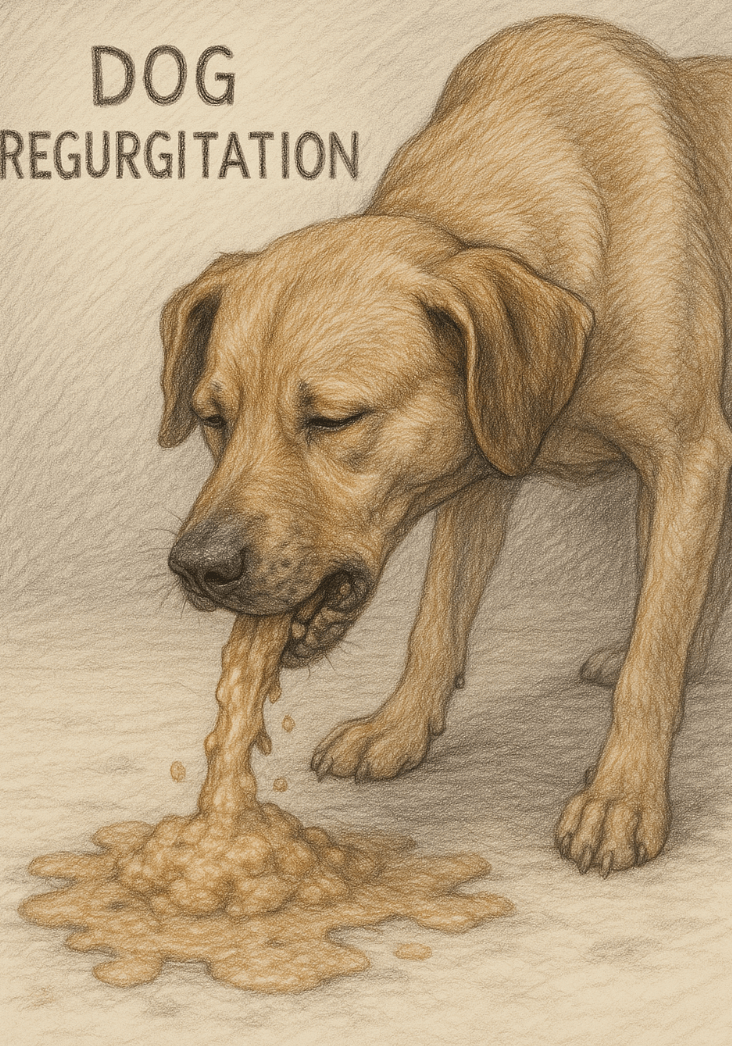Endocarditis in Dogs: Understanding, Preventing, and Treating This Serious Condition
Endocarditis in dogs is a serious and potentially life-threatening condition that affects the heart’s inner lining, particularly the valves. While it may not be as commonly discussed as other canine health issues, it is crucial for dog owners to understand its symptoms, causes, and treatment options. Early detection and proper care can make a significant difference in managing this condition and ensuring your dog’s quality of life. In this blog post, we’ll explore everything you need to know about endocarditis in dogs, from its underlying causes to practical tips for prevention and treatment.
What Causes Endocarditis in Dogs? Key Factors to Know
Understanding the causes of endocarditis in dogs is essential for prevention and early intervention. This condition often arises from bacterial infections that spread to the heart, but other factors can also contribute to its development. Below are the primary causes of endocarditis in dogs.
Bacterial Infections:
Bacteria entering the bloodstream can attach to the heart valves, leading to inflammation and infection. Common sources include dental disease, skin infections, or wounds.Underlying Heart Conditions:
Dogs with pre-existing heart valve abnormalities are more susceptible to developing endocarditis due to weakened heart structures.Immune System Weakness:
A compromised immune system can make it harder for a dog’s body to fight off infections, increasing the risk of endocarditis.Surgical Procedures or Invasive Treatments:
Certain medical procedures, such as catheterization, can introduce bacteria into the bloodstream, potentially leading to endocarditis.Age and Breed Predisposition:
Older dogs and certain breeds, such as German Shepherds or Boxers, may have a higher risk due to age-related changes or genetic predispositions.
By understanding these causes, dog owners can take proactive steps to minimize their pet’s risk of developing endocarditis. Prevention starts with awareness and regular veterinary care.
Symptoms of Endocarditis in Dogs: What to Watch For
Recognizing the symptoms of endocarditis in dogs is critical for early diagnosis and treatment. Since this condition affects the heart, its signs often manifest as systemic issues. Here are the most common symptoms to look out for.
Lethargy and Fatigue:
Dogs with endocarditis may appear unusually tired or reluctant to engage in physical activities.Fever and Elevated Body Temperature:
A persistent fever is often one of the first signs of an infection affecting the heart.Coughing or Breathing Difficulties:
Fluid buildup or valve dysfunction caused by endocarditis can lead to respiratory issues.Loss of Appetite and Weight Loss:
Dogs may lose interest in food or experience unexplained weight loss as the condition progresses.Pale Gums or Bluish Tint:
Poor circulation due to heart problems can cause changes in gum color, signaling reduced oxygen levels.
If your dog exhibits any of these symptoms, it’s important to consult a veterinarian promptly. Early intervention can significantly improve outcomes for dogs with endocarditis.
Check this guide 👉Understanding Heart Murmur Medication for Dogs: Best 7 Tips!
Check this guide 👉Where Is a Dogs Heart Located? Best 7 Expert Tips!
Check this guide 👉Understanding Heart Murmurs in Dogs: Best 7 Expert Tips!

Preventive Measures | Treatment Options |
|---|---|
Regular dental checkups | Antibiotics to target bacterial infections |
Maintaining a healthy immune system | Anti-inflammatory medications |
Monitoring for skin or wound infections | Heart medications to support function |
Avoiding unnecessary invasive procedures | Surgical interventions in severe cases |
Routine vet visits for early detection | Nutritional support and rest |
Diagnosing Endocarditis in Dogs: Steps Veterinarians Take
Diagnosing endocarditis in dogs requires a combination of clinical evaluations and diagnostic tests. Veterinarians use several methods to confirm the presence of this condition and rule out other potential causes of your dog’s symptoms. Here’s what the diagnostic process typically involves.
Physical Examination:
A thorough physical exam helps identify signs like heart murmurs, fever, or abnormal lung sounds.Blood Tests:
Blood work can detect elevated white blood cell counts or the presence of bacteria in the bloodstream.Echocardiogram (Ultrasound of the Heart):
This imaging test allows veterinarians to visualize the heart’s structure and identify valve abnormalities or infections.X-rays:
Chest X-rays may reveal enlargement of the heart or fluid accumulation in the lungs, which are common in endocarditis cases.Urine and Culture Tests:
These tests help identify specific bacteria causing the infection, guiding antibiotic selection.
Accurate diagnosis is key to effective treatment, and veterinarians rely on these tools to ensure your dog receives the best possible care. Timely testing can make all the difference in managing endocarditis.
Preventing Endocarditis in Dogs: Proactive Steps for Dog Owners
Preventing endocarditis in dogs involves a combination of good hygiene, regular veterinary care, and awareness of potential risk factors. By taking these steps, you can reduce your dog’s chances of developing this serious condition. Here are some practical tips for prevention.
Oral Hygiene:
Brush your dog’s teeth regularly and schedule professional cleanings to prevent bacterial infections from spreading to the heart.Wound Care:
Clean and monitor any cuts or injuries promptly to prevent infections from entering the bloodstream.Healthy Diet and Exercise:
A balanced diet and regular exercise help maintain a strong immune system, reducing susceptibility to infections.Routine Vet Visits:
Regular checkups allow veterinarians to detect and address potential health issues before they escalate.Avoid Unnecessary Procedures:
Limit invasive treatments unless absolutely necessary, as they can increase the risk of introducing bacteria into the bloodstream.
By incorporating these preventive measures into your dog’s routine, you can significantly lower their risk of developing endocarditis. Prevention is always better than cure, especially when it comes to serious conditions like this.
Complications of Endocarditis in Dogs
Endocarditis can lead to several complications if left untreated or poorly managed. These complications can further impact your dog’s health and quality of life. Here’s what you need to know.
Heart Failure:
Severe valve damage can result in heart failure, making it difficult for the heart to pump blood effectively.Organ Damage:
Bacteria from the infection can travel to other organs, causing issues like kidney or liver damage.Stroke or Blood Clots:
Infected debris from the heart can break loose and cause blockages in blood vessels, leading to strokes.Chronic Fatigue:
Persistent inflammation and poor circulation can leave your dog feeling constantly tired and weak.Secondary Infections:
A weakened immune system may make your dog more vulnerable to additional infections.
Understanding these complications underscores the importance of early diagnosis and treatment. Addressing endocarditis promptly can prevent these secondary issues from arising.
Breeds at Higher Risk for Endocarditis
Certain dog breeds are more predisposed to developing endocarditis due to genetic or structural heart issues. If you own one of these breeds, extra vigilance is recommended.
Cavalier King Charles Spaniels:
Known for mitral valve disease, which increases their risk of endocarditis.Boxers:
Prone to arrhythmogenic right ventricular cardiomyopathy, a condition that can complicate infections.German Shepherds:
Often affected by degenerative valve disease, making them more susceptible.Doberman Pinschers:
Have a higher incidence of dilated cardiomyopathy, which can exacerbate endocarditis.Great Danes:
Their large size and potential for heart issues put them at greater risk.
Knowing if your dog’s breed is predisposed to endocarditis can help you take preventive measures and stay alert for symptoms.
Supporting Your Dog During Recovery
Recovery from endocarditis requires patience and dedication. Here are some ways you can support your dog during this challenging time.
Medication Adherence:
Administer all prescribed medications exactly as directed by your veterinarian.Comfortable Environment:
Provide a quiet, stress-free space where your dog can rest and recover.Nutritional Support:
Offer high-quality, easily digestible food to help your dog regain strength.Limited Physical Activity:
Restrict strenuous exercise to avoid putting additional strain on the heart.Regular Follow-Ups:
Schedule frequent vet visits to monitor your dog’s progress and adjust treatment as needed.
By focusing on these aspects, you can help your dog heal and regain their vitality. Recovery may take time, but your care and attention will make all the difference.
Frequently Asked Questions About Endocarditis in Dogs
Can endocarditis in dogs be cured?
While it can often be managed with antibiotics and supportive care, complete recovery depends on the severity of the condition and any underlying health issues.
How long does treatment for endocarditis last?
Treatment typically involves weeks to months of antibiotics, along with ongoing monitoring and supportive care.
Is endocarditis contagious between dogs?
No, endocarditis is not contagious. It results from bacterial infections within the dog’s own body.
Are certain breeds more prone to endocarditis?
Yes, breeds with pre-existing heart conditions, such as Cavalier King Charles Spaniels and Boxers, may have a higher risk.
Can endocarditis be prevented entirely?
While it cannot always be prevented, maintaining good oral hygiene, regular vet visits, and a healthy lifestyle can significantly reduce the risk.
Final Thoughts: Protecting Your Dog from Endocarditis
Endocarditis in dogs is a complex and challenging condition, but with the right knowledge and proactive care, you can help protect your furry friend from its dangers. By staying vigilant about symptoms, prioritizing preventive measures, and seeking prompt veterinary care when needed, you can ensure your dog lives a happy and healthy life. Remember, your dog relies on you to be their advocate, so don’t hesitate to ask questions or seek second opinions if something doesn’t feel right. Together, we can keep our beloved companions safe and thriving.
What Is Grain-Free Dog Food? Best 7 Expert Tips! Discover the benefits, ingredients, and expert advice on grain-free dog food to help you choose the best diet for your pup’s health and happiness.
Airedale Terrier: Best 7 Expert Tips! Discover expert advice on training, grooming, and living with this intelligent, energetic breed for a happy and healthy companion.
Understanding Dog Regurgitation: Best 7 Expert Tips! Learn how to identify causes, manage symptoms, and prevent regurgitation in dogs with expert advice for a healthier, happier pet.
Special Forces Dogs: Best 7 Expert Tips! Discover expert advice on training, care, and the vital roles these heroic canines play in military operations worldwide.





